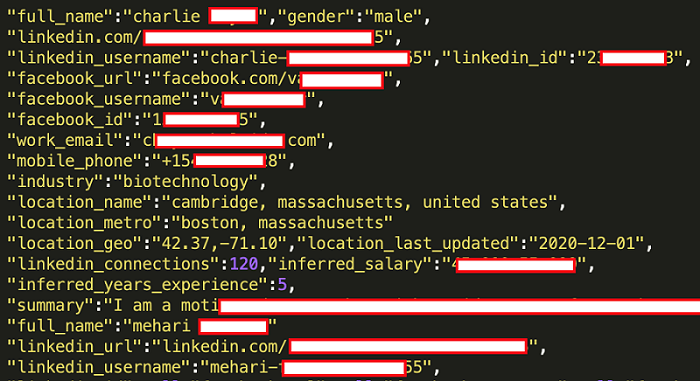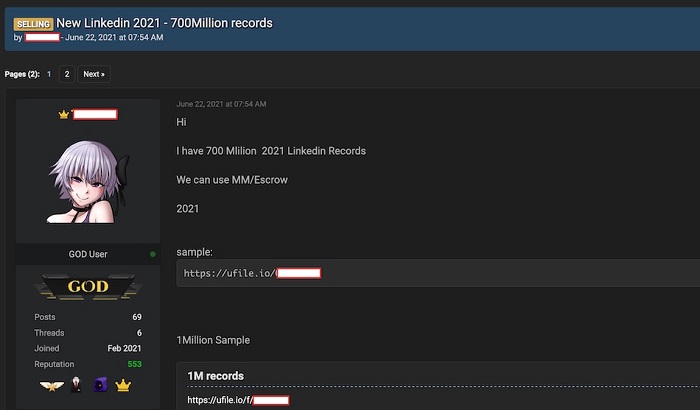LinkedIn has denied the recent accusations of a data breach that affected 700 million users and said that “it did not face a data breach, but rather the information was gained from scraping the network.”
The data breach resulted from a new dataset acquired by an anonymous hacker consisting of LinkedIn users’ private details, including phone numbers, physical addresses, geolocation data, and suggested salaries.
The dataset containing the personal information of 700 million users was also put up for sale on the Dark Web.
The sample dataset that has been published on the Dark Web includes user data like email addresses, full names, phone numbers, physical addresses, geolocation records, LinkedIn username, profile URL, salaries, personal and professional experience/ background, gender, and social media accounts and usernames.
The hacker also posted the data of 1 million users for the buyers. The user by the name “God” claims that the complete database contains the personal information of 700 million LinkedIn users.
Since LinkedIn has 756 million users, according to their website, this would mean that 92% of all LinkedIn users can be located in these records.
The LinkedIn data breach news spread like wildfire, and multiple internet users expressed their disappointment and anger via Twitter.
Twitter user “Lakshya Narula” had to say this about the whole incident.
A company which was sold for $26 Bn says that “It was obtained through scraping and there wasn’t a data breach”
Seriously? How unsafe is our data, @LinkedIn ?#linkedinhacked #linkedin #DataBreaches #cybersecuritynews https://t.co/QuOleC8nov
— Lakshya Narula #PleaseWearMasks (@narulakshya) June 30, 2021
Twitter user “nolastevedore” hinted at the Windows built-in security while expressing his concern over the incident.
If the LinkedIn division of $MSFT can be hacked so badly, can you imagine the weaknesses of relying on Windows built-in security for a personal PC or tablet?
Accumulating $NLOK (with a sizeable position in IRA).
LinkedIn data breach has implications for identity theft, privacy https://t.co/1z1s18AEv1
— nolastevedore (@nolastevedore) June 30, 2021
In an emailed statement, LinkedIn responded:
While we’re still investigating this issue, our initial analysis indicates that the dataset includes information scraped from LinkedIn and information obtained from other sources. This was not a LinkedIn data breach, and our investigation has determined that no private LinkedIn member data was exposed. Scraping data from LinkedIn violates our Terms of Service, and we are constantly working to ensure our members’ privacy is protected.
Accordingly to a recent LinkedIn update
The update further emphasizes the importance LinkedIn gives to its user’s trust and data. The service also reassures that when anyone tries to use the data for purposes that neither the service nor the user agreed upon, LinkedIn steps up to stop them and holds them accountable as well.
Understanding the application’s safe, secure, and privacy settings is essential to safeguard your online data. Setting up a complex password and changing it frequently is a good habit to adopt.
Also, if possible, then try to enable two-factor authentication on as many accounts as you can. They offer an additional layer of security and privacy.
Another way of protecting your personal data from a security breach is to use a secure, reliable, and encrypted virtual private network. It will safeguard your online data while also improving your overall cyberspace experience.
Furthermore, be careful and vigilant in accepting connections on LinkedIn from people you don’t really know. Cybersecurity experts also advised securing yourself with a VPN while using social media platforms.



